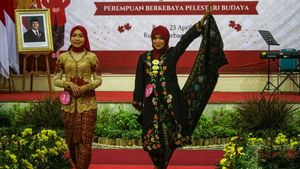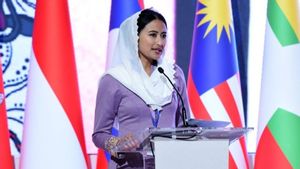JAKARTA - Free Nutrition Food (MBG) is the flagship program of the President and Vice President, Prabowo Subianto-Gibran Rakabuming Raka, which officially starts today, Monday, January 6, 2025.
This program aims to provide access to nutritious food for free for Indonesians in need. This program is also implemented in elementary and secondary schools.
Not only in Indonesia, there are several countries that have a nutritious lunch program in schools. Here are 8 countries that implement free school lunch programs, as reported by VOI from the World Population Review page.
1. Brazil
Brazil has provided free lunch at school for children from low-income families since the 1940s. In 2009, the program was expanded to cover all children in the country. The program aims to prevent obesity and improve nutrition education. School food is designed by more than 8,000 nutritionists and prioritizes the use of local materials.
2. Estonia
In Estonia, free school lunch is provided in elementary and secondary schools. The nutritional guidelines for school food are based on the Estonian food pyramid, which emphasizes the importance of vegetables, seeds, and dairy products in each food.
3. Finland
Finland provides free lunch for all students from preschool education to high school. The food provided is very nutritious, with lots of vegetables, fish, and meat. In some cities, school lunch has existed since the early 20th century and has been extended to all students in 1945.
4. India
The POSHAN program in India is the world's largest lunch program, which provides free lunch for children in more than 1.27 million schools across the country. The program aims to improve children's nutritional status and overcome malnutrition.
5. Sweden
Since 1973, school lunches at Sweden's elementary school have been provided free of charge. Local governments or governments bear all these costs. Most school lunches are served in Goods that include potatoes, pasta or rice; meat or fish; and vegetables. Milk and water are usually provided as drinks. There are also vegetarian options, as well as foods that meet religious requirements, all of which are also provided free of charge.
6. Japan
School food in Japan is very healthy, with key ingredients such as rice, fish, and vegetables. Students in Japan also play a role in serving food to their friends, which helps teach responsibility and respect.
7. China
In China, students have to buy lunch at a very affordable cost, around $0.70 or Rp. 11 thousand per day. The food provided generally consists of rice, meat and vegetables. For rural areas that are poor, the government has funded a nutritious lunch program to overcome malnutrition.
SEE ALSO:
8. United States
The National School Lunch Program provides nutritious food at low cost or free of charge for more than 31 million children every day. This program has grown and includes school breakfast, snack programs, and summer food. Many school districts also prohibit fast food and sweet drinks in the canteen.
The English, Chinese, Japanese, Arabic, and French versions are automatically generated by the AI. So there may still be inaccuracies in translating, please always see Indonesian as our main language. (system supported by DigitalSiber.id)

















